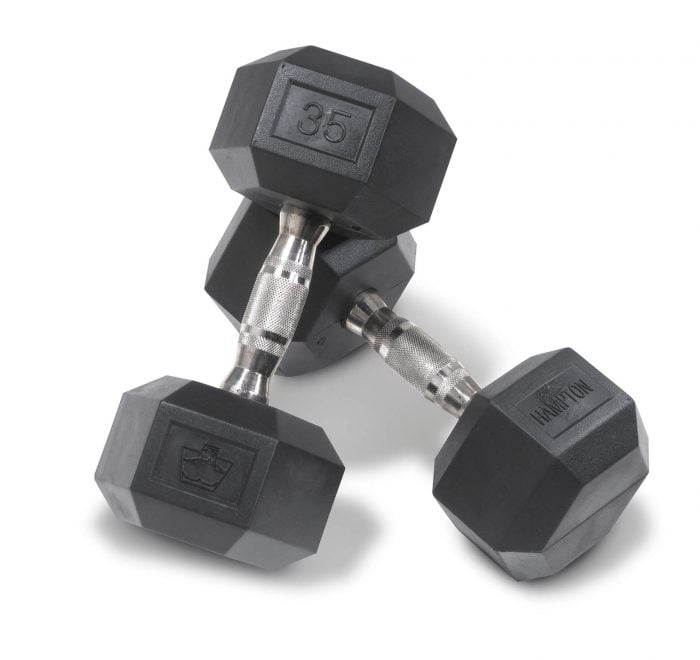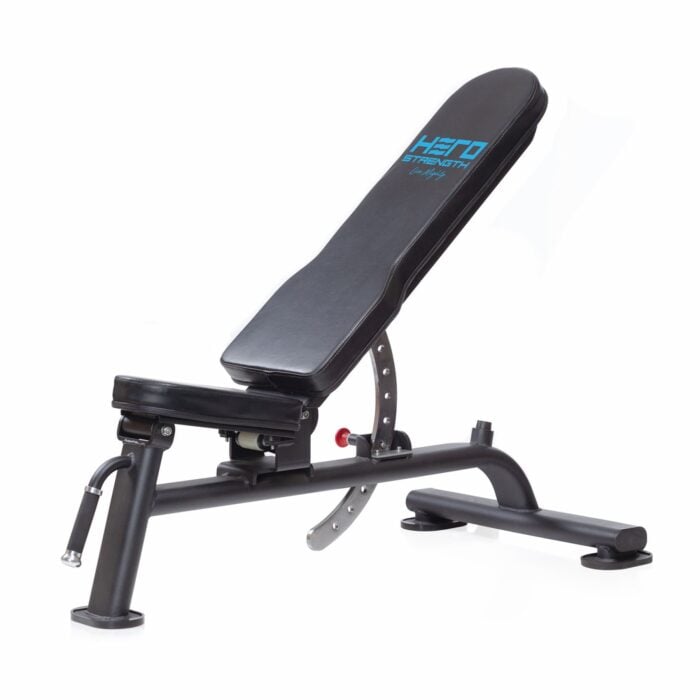Strength training is a cornerstone of success for basketball players, enabling speed, agility, power, and endurance. Take your game to new heights with our guide to weight-lifting exercises, where we’ll cover what moves you should be doing, common pitfalls to avoid, and how to schedule your routine for maximum effectiveness.
Key Takeaways:
1. Strength training reduces your risk of injury while improving court performance, making it essential for basketball players.
2. Before you get into heavy lifting, build a strong foundation through basic moves.
3. The best weightlifting regimen focuses on all major areas: the core, lower body, and upper body.
Importance of Strength Training for Basketball Players
Enhances Athleticism and Game Performance
Strength training can make you a better basketball player. It helps build the muscles you need to jump higher, run faster, and change direction quickly. This means you’ll be able to rebound better, run faster down the court, and play better defense.
Strength training also helps you stay strong throughout the game, even during the most intense moments. It improves your muscle coordination so you can move smoothly and react quickly to the changing pace of the game. This is especially important in basketball, where the tempo of the match can change in an instant.
Strength training and weight lifting don’t just enhance your performance on the court; they can also protect you from painful injuries and reduce time on the sidelines.
Reduces Injury Risk and Promotes Longevity
Basketball is fast-paced; if you play, you know how common sprains, strains, and joint problems are. Strength training can help prevent these injuries by strengthening the muscles, tendons, and ligaments around your knees, hips, and shoulders. Stronger muscles help support your body during quick movements, and balanced training ensures all your muscles are strong, preventing overuse injuries.
Recovery is also essential for injury prevention. Strength training focusing on flexibility and mobility, like controlled eccentric exercises, can help reduce soreness after games and improve overall recovery. This enables you to perform better in the moment and keeps you playing basketball for years to come.
Improves Core Stability and Agility
The core connects the upper and lower body, making it vital for nearly every movement in basketball. A strong core enables sharper cuts, faster changes in direction, and more controlled landings. Core stability also improves your shooting form and balance during layups, giving you consistent performance even under pressure.
Agility—the ability to start, stop, and change direction quickly—is also improved through targeted strength training. Exercises that mimic on-court movements, like lateral lunges and rotational core work, are especially helpful for defensive slides and offensive maneuvers.
Recommended products
-
Hampton Dura-Bell® Urethane Dumbbells – Pairs
$34.00 – $914.00 -
Hampton Adjustable Bench | J-Bench
$599.00
Beginner to Intermediate Strength Training Progression
Now that we’ve looked at the “why” of strength training, it’s time to see how to incorporate weights into your basketball workout sessions. If you’re just starting, be sure to master the foundational moves below before you move on to trickier exercises!
Foundation Phase
The initial strength training phase focuses on mastering bodyweight exercises and understanding proper movement mechanics. Exercises like push-ups, lunges, and planks help build strength and stability. For instance, lunges improve single-leg balance and coordination, which is critical for maintaining control during fast breaks or defensive moves.
Learning basic weightlifting techniques during this phase—like performing a controlled squat or holding a barbell—builds confidence and ensures you’re prepared for more advanced exercises. This phase is about gaining strength and laying the groundwork for safe, effective training progression.
Progressing to Weighted Exercises
Once you’ve established a strong foundation, you can incorporate weighted movements. Goblet squats, for example, introduce loaded squats while emphasizing proper form. Trap bar deadlifts are another excellent choice, as they allow for a natural lifting motion that minimizes strain on the lower back.
During this phase, keep your focus on form and technique. Gradually increase the weight and complexity of exercises so your body adapts safely. Go for steady gains rather than sudden changes!
You’ll also want to prioritize movement patterns like hip hinging and knee alignment, which are essential for advanced basketball-specific drills and movements.
Core Strengthening and Stability Development
Your core is one of the critical areas you’ll want to focus on throughout your workout program. It’ll keep you strong and flexible throughout your basketball career!
Key Exercises
Core strength is pivotal for maintaining balance, stability, and control on the basketball court. Below are some essential exercises to help you strengthen these muscles:
Planks
Planks strengthen core muscles by engaging multiple muscle groups in an isometric contraction. This means you’re holding a static position, but your muscles are actively working to stabilize your body.
Basic Plank
- Start in a push-up position with your forearms on the ground and your body in a straight line from head to heels.
- Keep your elbows directly under your shoulders and your core engaged.
- Hold this position for 30 seconds to 1 minute, gradually increasing the time as you get stronger.
Plank Variations
- Side Plank: Lie on your right side with your forearm on the ground, elbow directly under your shoulder. Lift your hips off the ground, creating a straight line from your ankles to your shoulders. Hold for 30 seconds on each side.
- Plank with Leg Lift: Start in a basic plank position. Lift one leg off the ground, keeping it straight behind you. Hold for 30 seconds on each side.
- Plank with Arm Reach: Start in a basic plank position. Reach one arm forward, extending it as far as possible without rotating your hips. Return to the starting position and repeat with the other arm.
TRX Rollouts
TRX rollouts are an excellent exercise for basketball players, targeting the rectus abdominis and obliques to build explosive movements on the court, like quick cuts, pivots, and powerful jumps.
How to do a TRX Rollout:
- Set Up: Anchor your TRX straps to a sturdy anchor point, like a pull-up bar or a sturdy tree.
- Starting Position: Grab the handles and walk your feet back until your body forms a straight line from your head to your heels.
- Roll Out: Keeping your back straight, slowly roll forward, extending your arms.
- Return: Engage your core to pull yourself back to the starting position.
- Repeat: Perform 8-12 repetitions, focusing on controlled movements.
Remember to maintain proper form throughout the exercise to maximize benefits and minimize the risk of injury.
Medicine Ball Slams
Medicine ball slams are a fantastic exercise for basketball players because they develop explosive power, core strength, and coordination. These slams can significantly improve your on-court performance by simulating the forceful movements of dunking or blocking a shot.
How to Do a Medicine Ball Slam:
- Hold the Ball: Start by holding a medicine ball with both hands at chest height.
- Hinge Back: Hinge your hips, bending your knees slightly and preparing to explode upward.
- Power Up: Explosively extend your hips and knees, swinging your arms up to bring the ball overhead.
- Slam: Slam the ball forcefully onto the ground, fully extending your body.
- Controlled Descent: Catch the rebound and return to the starting position.
Remember to choose a medicine ball weight that challenges you without compromising proper form. For a resilient ball that withstands your most brutal slams while pushing you to the next level, look no further than the Hampton Slam Ball! This rugged little workhorse comes in all weights, ranging from 4-50 lbs, ensuring you’ll find the perfect weight for your workout.
The bottom line? Don’t overlook your core as you work to strengthen your muscles for the basketball season!
Lower Body Strength and Power
Another crucial area for basketball players is the lower body. After all, it’s the engine of basketball performance, powering incredible feats of agility and stamina! Below are some of our top recommended exercises to strengthen this area:
Primary Exercises
Trap Bar Deadlifts
Trap bar deadlifts are a fantastic exercise for basketball players as they target key muscle groups crucial for explosive power and lower body strength. Trap bar deadlifts can enhance your jumping ability, sprinting speed, and overall athletic performance by strengthening the back, core, legs, and grip.
How to Do a Trap Bar Deadlift:
- Set Up: Stand inside the trap bar, feet hip-width apart.
- Grip: Grab the handles with an overhand grip.
- Hinge Back: Hinge at your hips, keeping your back straight, and lower your body until your shins touch the bar.
- Lift: Drive through your heels, extending your hips and knees to lift the weight.
- Lower: Slowly lower the weight back to the starting position.
Be sure to deadlift with a sturdy bar, like the Hampton Open-End Trap Bar, to ensure maximum gains and reduce your risk of injury!
Squats
Weighted squats are a fantastic exercise for basketball players as they target key muscle groups crucial for explosive power and lower body strength.
Here are some common squat variations:
- Back Squat: This is a classic squat where the barbell rests on your upper back.
- Front Squat: The barbell rests on your front shoulders, which can help improve your ankle mobility and core strength.
- Pistol Squat: This single-leg squat challenges your balance and coordination.
- Box Squat: You squat down to a box, which can help you develop explosive power and proper depth.
Regardless of the type of squat you’re doing, Hampton’s extensive line of barbells is there to help you find the perfect weight and balance!
You’ll also want to incorporate agility-based exercises as you develop your lower body strength. That’s where plyo drills come in!
Dynamic Plyometric Drills
Plyometric exercises like box jumps and stair jumps train fast-twitch muscle fibers responsible for explosive power. These drills improve vertical leap and enhance coordination, allowing players to time rebounds and blocks effectively. Rotating jump lunges add a lateral stability component, essential for defensive slides and sudden direction changes.
Are you planning to start box jumps and need sturdy equipment? The Hampton 3-in-1 Plyometric Box is the tool for you! It features three different jumping configurations, plus a sturdy anti-skid surface to keep you safe during your most intense workouts.
Upper Body Strength and Control
Upper body strength is essential for rebounding, shooting, and maintaining control during physical play. Let’s take a look at some essential exercises to strengthen your shoulders and arms:
Key Movements
Push Presses
Push presses are a fantastic exercise for basketball players as they target key muscle groups crucial for explosive power and upper-body strength. By combining the strength of a shoulder press with the power of a squat, push presses can enhance your shooting accuracy, passing power, and overall upper body strength.
How to Do a Push Press:
- Rack the Barbell: Clean the barbell to your front rack position, resting it on your front shoulders.
- Dip Down: Dip your hips slightly, bending your knees.
- Drive Up: Explosively extend your hips and knees, using the momentum to press the barbell overhead.
- Lock Out: Fully extend your arms and lock out your elbows.
- Lower the Barbell: Slowly lower the barbell back to your front rack position.
Bench Presses
Like push presses, bench presses strengthen your upper body and build power and accuracy for the basketball court.
How to Do a Bench Press:
- Lie Down: Lie on a flat bench with your feet flat on the floor, shoulder-width apart.
- Grip the Barbell: Grip the barbell with an overhand grip, slightly wider than shoulder-width.
- Lower the Barbell: Slowly lower the barbell to your chest, touching it lightly.
- Press Up: Explosively press the barbell back up to the starting position, fully extending your arms.
- Lower and Repeat: Slowly lower the barbell back to your chest and repeat.
Anytime you’re doing presses, go slowly and prioritize proper form! Use a weight that challenges you but doesn’t compromise your lifting technique.
Pulling Movements
Pulling exercises like barbell rows and pull-ups strengthen the back and improve posture, preventing the forward rounding often caused by repetitive shooting motions. Pull-ups also enhance grip strength, a key factor in ball control and securing rebounds.
Functional and Sport-Specific Training
As you incorporate general moves into your routine, there are also some sport-specific exercises that you should consider.
Incorporating Functional Exercises
Functional exercises mimic the movements basketball players use during games. TRX power pulls, for example, replicate the rotational strength needed for accurate passes and strong finishes. Lateral lunges develop the adductors and abductors, muscles that support quick side-to-side movements.
Here are some functional exercises that basketball players can incorporate into their training routine:
- TRX Power Pulls:
- This exercise targets the back, shoulders, and core muscles.
- Stand facing the TRX suspension trainer, holding the handles.
- Lean back, keep your body straight, and pull yourself towards the anchor point.
- Pause at the top, then slowly lower yourself back to the starting position.
- Lateral Lunges:
- This exercise targets the inner and outer thighs, glutes, and hips.
- Stand with your feet hip-width apart.
- Step to the side, bending your knee and lowering your body until your thigh is parallel to the floor.
- Push off your foot to return to the starting position and repeat on the other side.
Sport-Specific Movements
Drills like the Euro-step combine balance, agility, and core strength, simulating real-game scenarios. Explosive push-ups train the upper body’s fast-twitch fibers, which are essential for quick rebounds and defensive reactions.
Offensive Movements:
- Euro-Step: Practice executing the Euro-step by starting with a dribble, then crossing over to one side, followed by a quick step with the opposite foot to finish the move.
- Spin Move: Practice spinning both ways, using your hips to initiate the turn and protecting the ball with your off-hand.
- Behind-the-Back Dribble: Practice dribbling the ball behind your back with both hands to improve ball-handling skills and change of direction.
Defensive Movements:
- Defensive Slides: Practice sliding laterally, keeping your feet low and your eyes on the ball.
- Closeouts: Practice closing out on shooters, taking quick, controlled steps and using your hands to contest the shot.
- Rebounding: Practice boxing out opponents, jumping vertically, and using your hands to secure the rebound.
These exercises will help you use your strength and agility training in sport-specific scenarios, combining the skills you’ve been practicing to optimize your game.
Conditioning and Aerobic Base Building
Conditioning for basketball focuses on simulating the sport’s intense bursts of activity.
Interval and Sprint Training
High-intensity sprints, combined with lateral movements like defensive shuffles, prepare players for the rapid pace of games. Rest intervals between sprints teach players how to recover efficiently, a vital skill for maintaining performance during prolonged play.
Small-Sided Basketball Games
Playing 3-on-3 or 4-on-4 games builds cardiovascular endurance, enhancing teamwork and decision-making under pressure. These smaller games create more ball-handling opportunities and defensive challenges, sharpening players’ skills in a competitive environment.
Program Design and Implementation
Training Schedule
A well-rounded training schedule balances strength development with recovery. During the offseason, focus on building strength with three full-body workouts per week, incorporating progressive overload to ensure continuous improvement. In-season, training volume should decrease to maintain strength while preventing fatigue.
Sample Weekly Structure
- Day 1: Upper Body Focus + Plyometrics
- Day 2: Lower Body Strength + Core Stability
- Day 3: Active Recovery or Aerobic Conditioning
- Day 4: Mixed Upper and Lower Body + Speed Training
- Day 5: Plyometric and Core Work
- Days 6 & 7: Rest or Light Mobility Work
Motivation and Goal Setting
Building Consistency
Consistency is the foundation of progress! Training with your teammates fosters accountability and creates a supportive environment. Additionally, maintain a training log to track tangible evidence of improvement. It’ll help boost your motivation to stay focused on your goals!
Goal-Oriented Training
Speaking of goals, setting specific and measurable ones ensures players remain driven. For example, aiming to increase a squat max by 10% or improve a vertical jump by a few inches gives you concrete milestones to work toward. Regular assessments will keep goals realistic and help you recalibrate based on your fitness levels.
In Conclusion: Workouts That Make a Difference
Strength training is a transformative tool for basketball players, enhancing physical performance, mental toughness, and injury resilience. By combining foundational strength work with sport-specific drills and a structured approach, you can elevate your basketball game to new heights!
Consistent effort, gradual progression, and a focus on long-term development ensure you’ll thrive on the basketball court!





